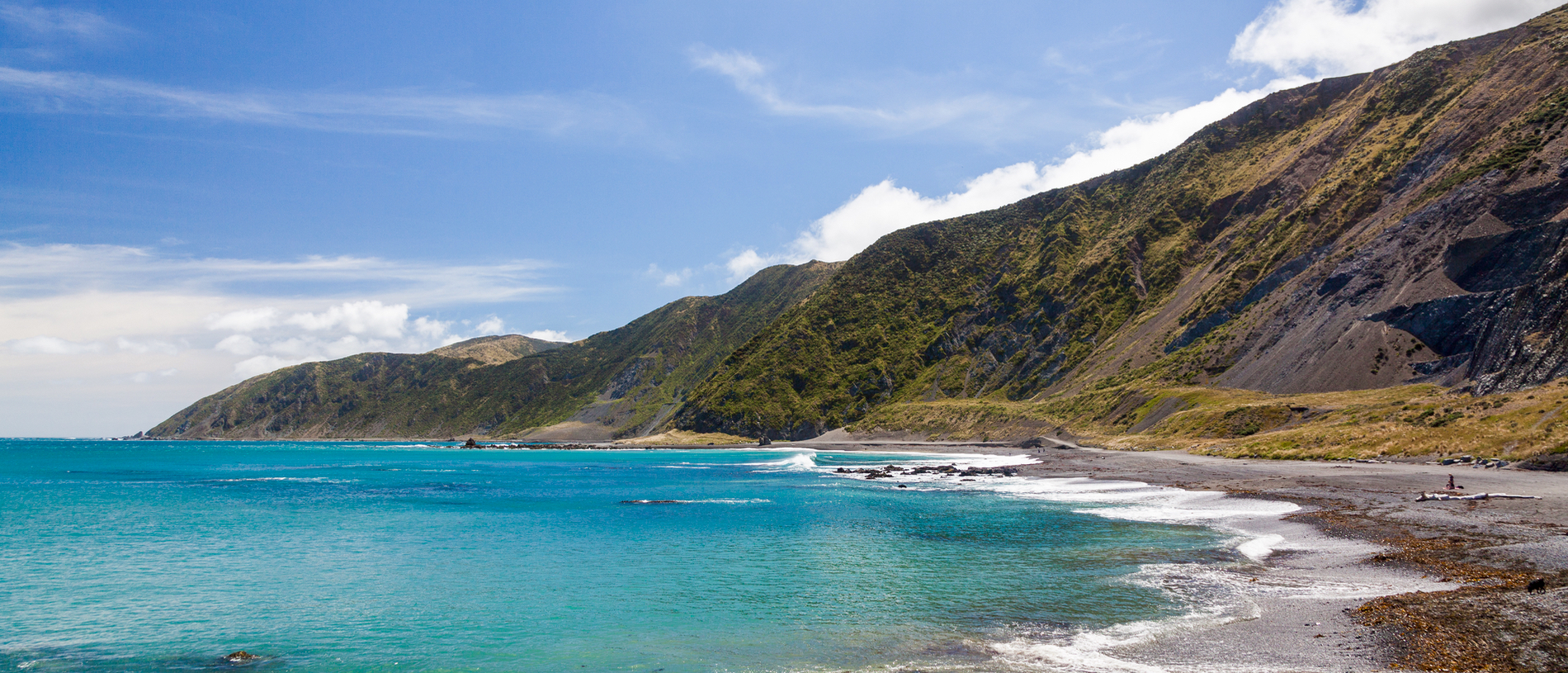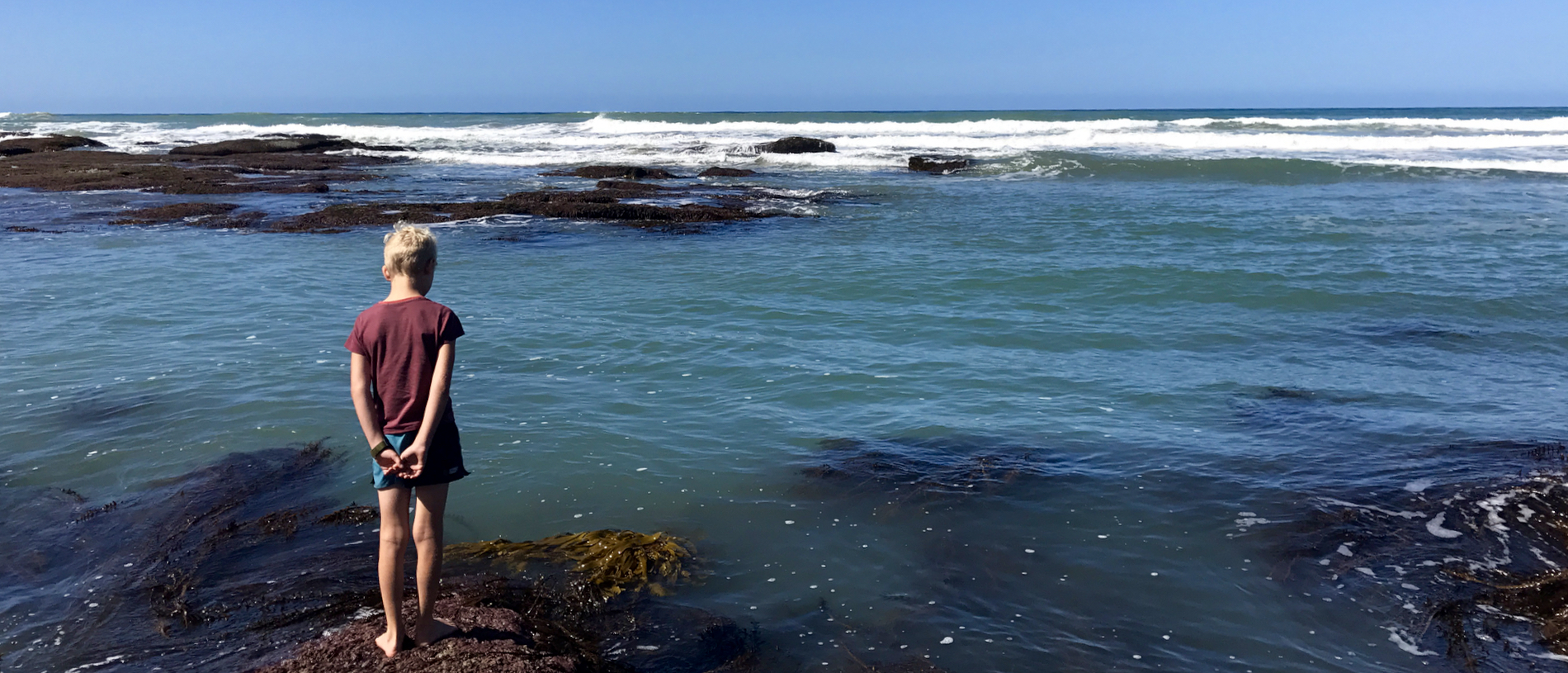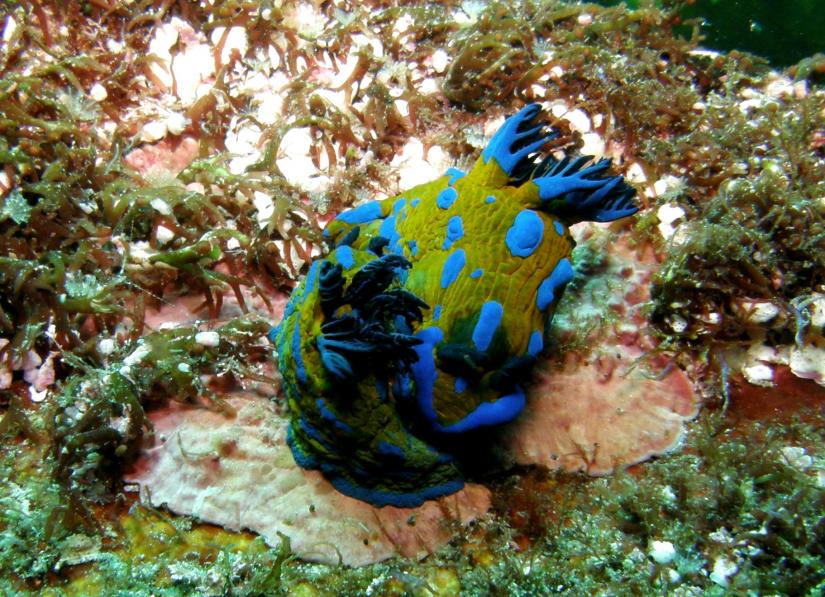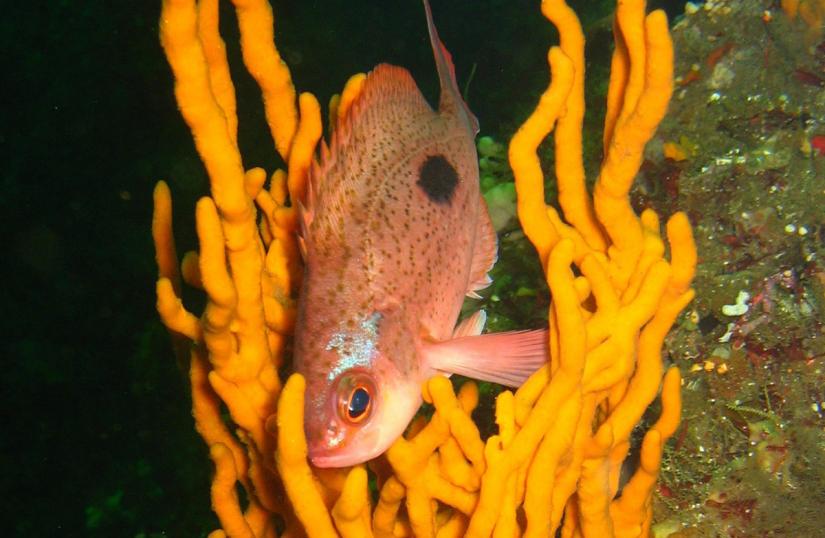
Taputeranga Marine Reserve
Taputeranga Marine Reserve is only 6km from Wellington’s city centre and offers snorkelling, diving and walking opportunities.

Te Angiangi Marine Reserve protects a piece of the Central Hawke’s Bay coast and is a great spot for diving and snorkelling.
At low tide a broad mudstone platform is exposed, revealing beds of Neptune’s necklace, pink coralline seaweeds and patches of sea grass mixed with a lively rockpool community of fish and shellfish, including golden limpets.
Offshore the interplay of the warm East Cape Current and the colder South Wairarapa Current means many typically ‘northern’ and ‘southern’ marine species occur in the reserve. Sometimes these can even be seen swimming together or sheltering in the same crevice. Rock lobsters are plentiful.
The name of the reserve was chosen by Ngāti Kere to honour local history. When Ngāti Kahungunu settled the region, Central Hawke’s Bay was divided between Te Aomatarahi and Taraia. Te Aomatarahi, a descendent of Pōrangahau, was given the lands east of Tukituki River and mana whenua passed to his descendants Tu Mapuhiarangi and Te Angiangi. The area covered by the mana of Te Angiangi included what is now the marine reserve.
The best places for beginners to snorkel are the sheltered waters of Stingray Bay and Shelly Bay.
During calm conditions, experienced snorkel and scuba divers will have no difficulty swimming off the edge of the intertidal rock platform.
There are about 138ha of reef to explore. The most spectacular underwater scenery is found at depths of 9–15m south of Aramoana. Dense Ecklonia kelp forest covers most of the reef, which is broken in places by long sandy guts, providing a habitat for a thriving community of common reef animals.

Colourful nudibranchs (sea slugs) and large schools of butterfly perch and tarakihi are found at depths of 24–36m on the Boulder Bank or Sponge Garden. This community is dominated by finger sponges and red seaweeds. Several types of fish, including sea perch, scarlet wrasse, large blue cod and common roughy are more abundant here than anywhere else in the reserve.

Butterfly perch and sponge. © DOC
There’s good birdwatching, too. At low tide, many types of birds take advantage of rich feeding areas on the intertidal platforms. Kingfishers, gulls, herons, variable oystercatchers, pied stilts and flocks of eastern bar-tailed godwits are common. At high tide, small flocks of gulls, white-fronted terns and Caspian terns can be viewed roosting on the sand at the mouths of small streams. Banded dotterels can also be seen on some of the beaches.
Rockpoolingis a popular activity at Te Angiangi. On the large tidal platform, you may see octopus, crayfish, and wandering anemones among many other species, including migratory wading birds.
The best places for swimming are the sheltered waters of Stringray Bay at low tide and Shelly Bay.